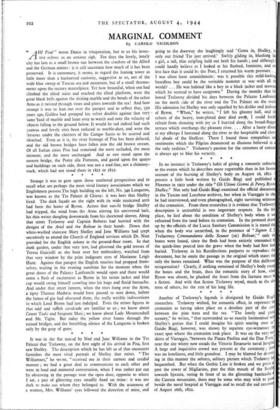Strange it was to gaze upon those unaltered perspectives and
to recall what are perhaps the most vivid literary -associations which we
Englishmen possess.The high building on the left, No. 349 Lungarno, was known as the Tre Palazzi di Chiesa: it was here that Shelley lived. The dark facade on the right with its wide rusticated arch had been the home of Byron. Across that sun-lit bridge Shelley had tripped, the wind from the Arno stirring his uncovered hair, his thin wrists dangling downwards from his shortened sleeves. Along that street Trelawny and Captain Roberts had hurried with the designs of the Ariel and the Bolivar in their hands. Down that white-washed staircase Mary Shelley and Jane Williams had crept secretively to attend the Church of England services which Dr. Nott provided for the English colony in ihe ground-floor room. In that dank garden, under that very tree, had glistened the gold tresses of Teresa Guiciolli as she bent over her embroidery, watched from that very window by the prim indignant eyes of Marianne Leigh Hunt. Against that parapet the English tourists had propped them- selves, waiting in the evening sunshine for the moment when the great doors of the Palazzo Lanfranchi would open and there would come a flash of excitement as Byron in his tartan jacket and blue cap would swing himself scowling into his huge and florid barouche. And under that street lantern, when the stars hung over the Arno, a tipsy Thomas Medwin would have paused to note down, before the fumes of gin had obscured them, the really terrible indiscretions in which Lord Byron had just indulged. Even the minor figures in that odd and raffish cavalcade are familiar to us ; we know about Count Taafe and Sergeant Masi ; we know about Lady Mountcashell and Mr. Tighe. But today the yellow river foams through the ruined bridges, and the breathless silence of the Lungarno is broken only by the gasp of guns.


























 Previous page
Previous page